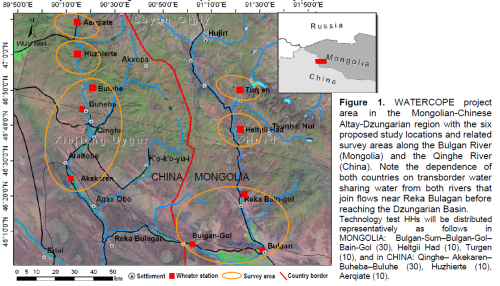Project area
The Watercope R&D consortium addresses key development constraints in one of the poorest regions in the Mongolian-Chinese Altay-Dzungarian region. This is a hydrological transborder model area in Central Asia, where water and land resources and ESS&F are under increasing pressure due to the effects of climate change and population growth on traditional livelihood strategies. In this region small scale sedentary farming in oases around the connected watersheds of the Bulgan (Mongolia) and Qinghe (China) rivers is heavily dependent on grazing of the vast surrounding rangelands (increasingly recognized as large but fragile global carbon stores) in the valleys and mountains. During summers the herds graze marginal land around the oases, thereby bringing nutrients to agricultural areas, or are in transhumance to remote high mountain pastures, while in winter herders benefit from fodder provision in the oases. Being strongly linked, livelihoods, pastoralism and farming are nonetheless practiced by different ethnic minorities. While pastoralism, in many areas severely threatened by the consequences of overgrazing, is the main livelihood for Kazakh and Mongolian people, Chinese and to a lesser extent Mongolian groups are occupied with oasis farming.
For visual impressions of the project area please refer to the photo gallery.

